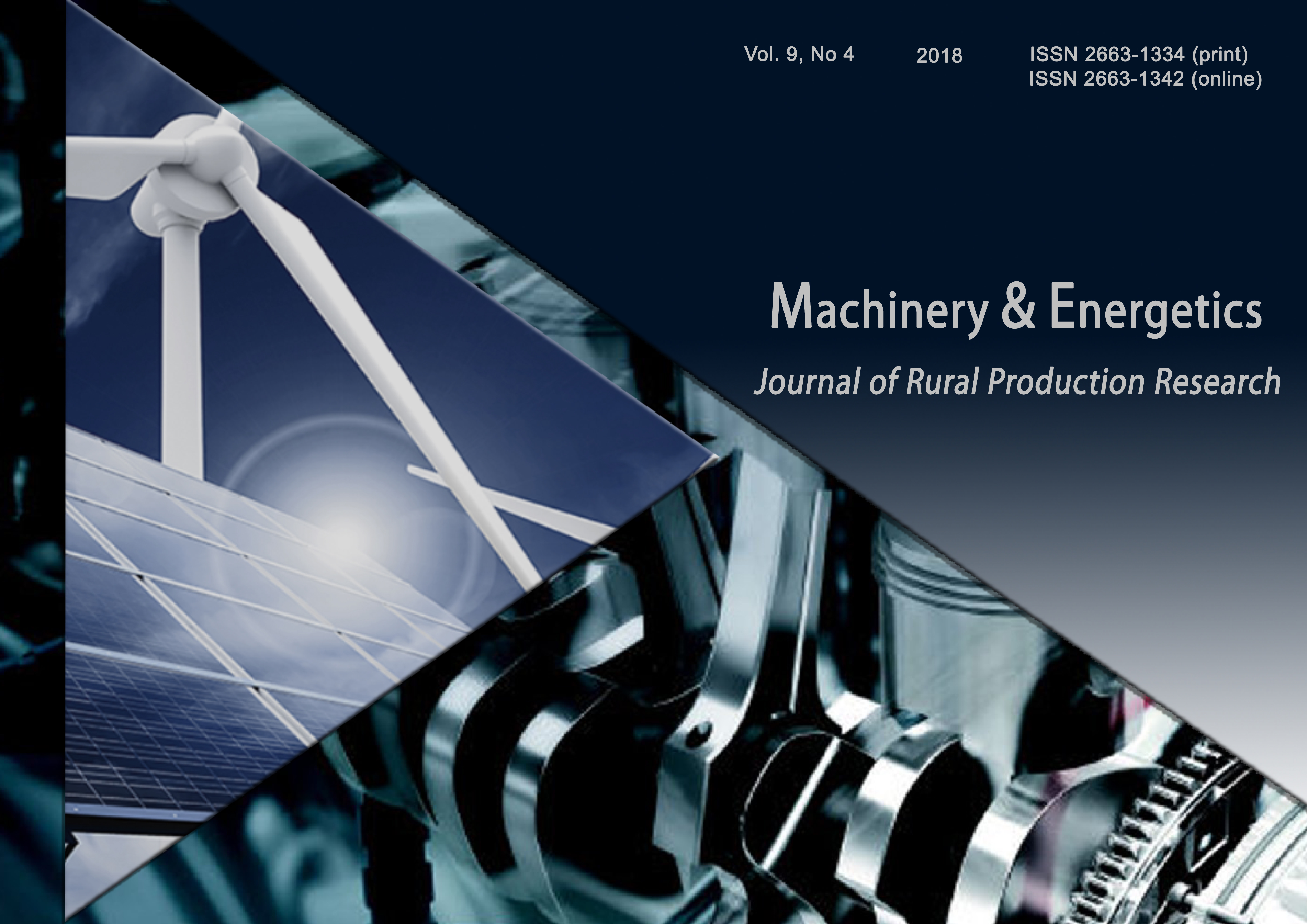Ustification of parameters of vehicles for bulk transport of apples
Abstract
Abstract. The role of vehicles in agricultural production is significant. He is a link in the processing chain of the agro-industrial complex of Ukraine. For uninterrupted provision of the population with fruits and vegetables, the average annual increase in production of fruits shall be not less than 12%. Therefore, the issues of improving productivity and reducing damage to products that occur during transport, become currently of great importance.
On-farm transportation vehicles widely used by tractor transport. The rationality of the use of wheeled tractors substantiates the possibility of their movement on
asphalt and on dirt roads. A high level of use of tractor transport in the countries of Western Europe and the USA. So in the farms the leading countries of Western Europe (Germany, Italy, France, etc.) About 70-90% of TA's agricultural goods by tractor transport.
Balanced development of all parts of the APK is a necessary condition for the solution of problems of ensuring the country's food supply, especially fruits and vegetables raw materials. Currently, the weak development of processing branches of agroindustrial complex, production infrastructure lead to huge losses of agricultural products. For example, the loss of collected fruits and vegetables amount to 40-45%. The need for vehicles to horticulture, is satisfied only at 55-60%.
One of the most important and challenging tasks is to combat damage and losses of agricultural products, in which a very important role for vehicles. As shown by the analysis in the process of gathering apples more than 15-20% of the production does not reach the consumer.
For on-farm transportation use fruit boxes or containers. The time fruit pome crops are transported by bulk method (in vehicles and tractor trailers). Use of vehicles for General purpose do not meet the agronomic requirements for the carriage of fruit. Special vehicles for the carriage of bulk fruit way available.
Set out the feasibility and the main parameters of the body for on-farm transport of apples.
Key words: fruits, transportation, transportation, containers, efforts on the fruits, mechanical damage, the safety of the fruit.
References
Мартишко В. М., Бабій В. П., Деркач О. П. Обґрунтування вантажопідйомності контейнеровоза для потокового збирання плодів. Науковий вісник Національного аграрного університету. 1998. Том 9. С. 47–53.
Demidko M., Martishko V. Rationalisierung und Mechani-sierung der Obsternte. Akad. D. Landwirtsca-fuswiss. d.DDR. 1986. Berlin. 115–117.
Четвертаков А. В. Сопротивление яблок ста-тическому сжатию. Труды ВНИС имени ?. В. Ми-чурина. 1971. Вып. 15. С. 240–245.
Красников В. В. Подъемно-транспортные машины. Москва. Колос. 1981. 263 с.
Левачев Н. А., Каверин В. А. К вопросу опреде-ления размеров контейнеров для транспортирования плодов. Консервная и овощесушильная промышлен-ность. 1971. №4. С. 20–21.
References
Martyshko, V. M., Babiy, V. P., Derkach, O. P. (1998). Substantiation of carrying capacity of the container ship for the stream collecting fruits. Scientific Bulletin of National agrarian University. Vol. 9. 47-53.
Demidko, M., Martishko, V. (1986). Ratio-nalisierung und Mechani-sierung der Obsternte. Akad. D. Landwirtscafuswiss. d.DDR. Berlin. 115-117.
Chetvertakov, A. V. (1971). Resistance of apples, static compression, proceedings of the VNIIS named S. V. Michurin. Vol. 15. 240-245.
Krasnikov, V. V. (1981). Lifting-transport machines. Moscow. Ear. 263.
Liavacev, N. A., Kaverin, V. A. (1971). To the question of determining the size of containers for transporting fruit. Canning and vegetable drying industry. No 4. 20-21.
Downloads
Published
Issue
Section
License
Relationship between right holders and users shall be governed by the terms of the license Creative Commons Attribution – non-commercial – Distribution On Same Conditions 4.0 international (CC BY-NC-SA 4.0):https://creativecommons.org/licenses/by-nc-sa/4.0/deed.uk
Authors who publish with this journal agree to the following terms:
- Authors retain copyright and grant the journal right of first publication with the work simultaneously licensed under a Creative Commons Attribution License that allows others to share the work with an acknowledgement of the work's authorship and initial publication in this journal.
- Authors are able to enter into separate, additional contractual arrangements for the non-exclusive distribution of the journal's published version of the work (e.g., post it to an institutional repository or publish it in a book), with an acknowledgement of its initial publication in this journal.
- Authors are permitted and encouraged to post their work online (e.g., in institutional repositories or on their website) prior to and during the submission process, as it can lead to productive exchanges, as well as earlier and greater citation of published work (See The Effect of Open Access).

